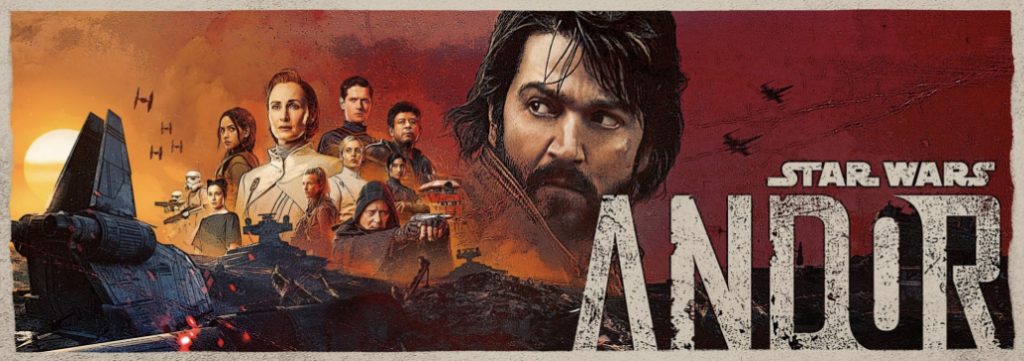Editor’s note: Spoilers ahead.
An adrenaline-inducing heist of 8 million imperial credits filled with exhilarating gun-fights, a dogfight through blazing meteors and an antagonist that is genuinely intimidating can all be found in “Andor,” the latest and possibly greatest show of the Star Wars franchise.
“Andor” boasts a stellar production team, including directors like Benjamin Caron, who directed the Netflix show “The Crown,” and Toby Haynes, who directed popular series like “Doctor Who” and “Sherlock.” Additionally, actor Diego Luna returns from the wildly successful “Rogue One: A Star Wars Story” as the lead role in “Andor.”
While “Andor” may seem like just another Star Wars show full of plotless fights at first glance, this one is far more nuanced than that, with a number of qualities that make it worth watching.
Featuring a diverse cast of characters, intricate set designs and sweeping landscapes, “Andor” displays quality unseen in other Star Wars shows.
With the mediocre reception of “Book of Boba Fett” and “Kenobi,” Star Wars fans were desperately in need of a hit show. A few months after its first trailer, “Andor” was released on Disney+ in late September.
The first and probably biggest difference that sets “Andor” apart from the other shows is its pacing. Generally speaking, Star Wars shows and movies are blindingly fast, packed with a seemingly never-ending stream of action. However, “Andor” took many by surprise because little actually happened in the first three episodes.
These episodes took the time to focus on worldbuilding rather than diving straight into the action — something that made the show shine as the plot progressed.
Episode 3 ends with Cassian Andor, the protagonist, narrowly escaping his home planet with the help of a mysterious man leading a burgeoning rebellion against the Empire, the evil authoritarian government that holds an iron grip over the galaxy. The music that builds throughout this episode and the rest of the show feel fresh and different, straying from the heavily orchestral music from other Star Wars media and rivaling the successful soundtrack of “The Mandalorian,” also an unusual track that deviates from the typical Star Wars feel. Nicholas Britell, the composer of the “Andor” score, does a great job of making the show feel emotionally charged and unique.
After these setup episodes, the plot pacing accelerates. Later episodes focus on developing characters’ personalities and relationships with other characters. They also masterfully build tension by highlighting the high stakes and difficulty of the protagonists’ missions.
Rather than using virtual sets like the ones in “Kenobi,” “The Book of Boba Fett” and “The Mandalorian,” “Andor” is mostly filmed in real locations. This gives the show a much more cinematic feel with its dramatic landscapes and detailed set designs.
The tension expertly builds to a climax in Episode 6, when Andor and the rest of the rebel group perform the heist they have been planning for months. This episode is the highlight of the show by far, with amazing visuals and an enthralling soundtrack.
The combination of bright colors, soaring asteroids and the deafening roar of the enemy TIE fighters put together by the CGI creates unmatchable excitement.
“Andor” is a good entry point for anyone looking to delve into the Star Wars universe. The show is not very lore-heavy, does not feature too much invasive fan service and is centered on human protagonists with little-to-no alien characters, making it easy for new viewers to understand the plot.
The show’s slower-paced plot and more mature content cater to an older audience. It isn’t just a shallow, action-packed show where there’s a new adventure every episode. “Andor” deserves far more attention and should be praised for its high quality and accessibility.

























